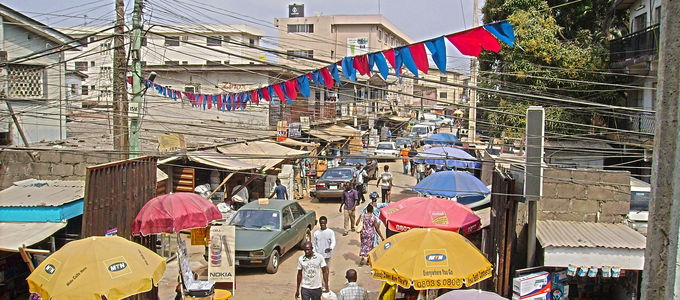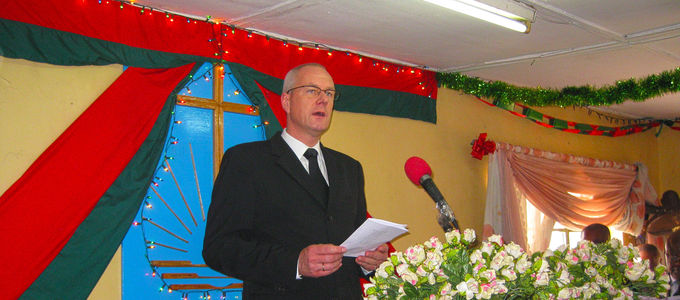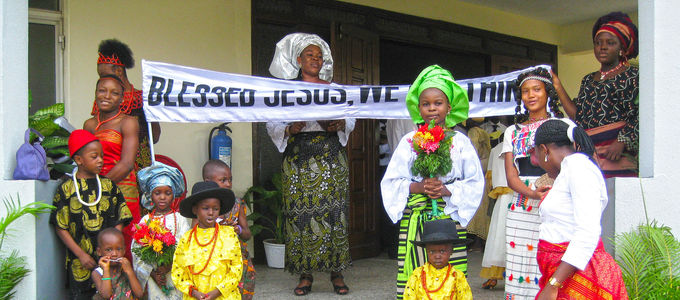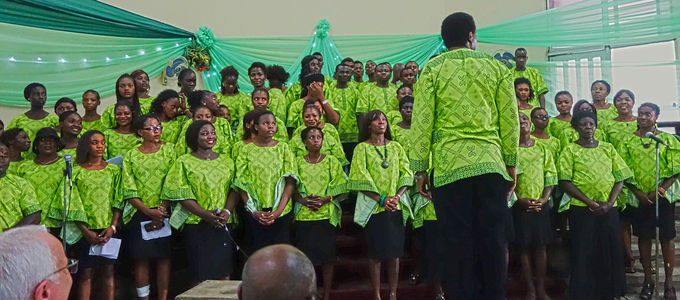
Lagos is not only the largest city in Africa, but also one of the most densely populated cities of the world. No one knows exactly how many people live there, but estimates range between 18 million and 20 million—roughly. In this great confluence of diverse cultures there are seven New Apostolic congregations.
The annual temperature measures around 27 degrees Celsius, but it doesn’t get much colder at night. It is quite a strenuous prospect to live here. Added to this is a pronounced megacity climate: Lagos is an economic hub, the banking and financial centre of the country. Everything moves at a loud, hectic, fast-paced tempo. Everything about this city is “mega”! Numerous universities and training institutions make it a cultural centre. The international airport and three sea ports make it the most important traffic junction of the nation. Lagos has everything that millions of people need. Of course, not all of them can afford everything. The contrast between rich and poor is enormous.
The city functions
And yet it is more than impressive that such a megacity even functions in the first place! Until December 1991, Lagos was the capital city of Nigeria, before Abuja assumed the position. At that time Lagos numbered just over five million inhabitants—and today there are an estimated 18-20 million! This rapid and immense growth also holds a great deal of explosive social force.
Seven New Apostolic congregations
New Apostolic congregations also exist in this megalopolis, juxtaposed with many other churches and worldviews. The most central of these congregations are Ikeja Central, which is part of Greater Lagos—and also home to the headquarters of the New Apostolic Church—and Lagos Central. The other congregations are Surulere, Satellite, Papa Ashafa, Akowoujo, and Majidun. In total, some 1,000 New Apostolic members attend divine services here. Attending divine services is extremely difficult during the week, however, alone because of the city traffic: at times our brothers and sisters need to travel for up to two and a half hours just to get into the city. And yet they do manage to find the time and make these efforts. It is most impressive to see how resolutely these members stand by their Church.
Refugees are also attending
This city is home to a veritable conglomerate of all ethnic groups represented throughout Nigeria, and many of them speak their own languages. Most of the time these include Ikbo, Hausa, and Yoruba. The official language is English, which is the only way they can all understand one another to some degree. In addition to the many residents, there are also many refugees living here, most of them from Congo. They comprise the majority in the congregation of Lagos Central. For this reason the divine services there are most often conducted in two languages, namely English and French. It was not so long ago that the congregation was located near a notorious market where people could buy almost anything—including drugs, weapons, and human organs!
Patience has reward
In the other congregations in Lagos, the divine services are predominantly conducted in English. When many Yoruba-speaking members are present, the service is conducted in Yoruba. This is the case in the congregation of Surulere, for example. This is the founding congregation in Lagos. Even its name is interesting: Surulere means: “Patience has reward”—and that is also how our brethren there live their faith.
Rented quarters versus a church building
While all the other congregations in Lagos gather in rented quarters, the congregation of Ikeja Central has its own church building. Spoiled ears would likely take some time getting used to the divine services in the rented premises: at times there are also several other congregations, of all sorts of denominations, conducting their own services in the multi-storey buildings. These are often very loud, since the sermons are mostly disseminated outside the buildings with loudspeakers…


















